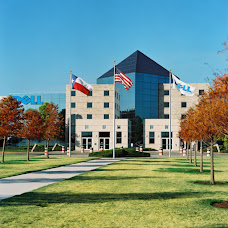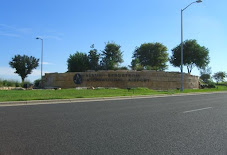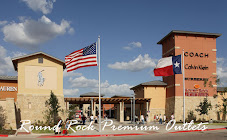Instructions on how to upgrade Cisco IOS® on Cisco Aironet APs?
Refer to Working with Software images for instructions on how to upgrade the Cisco IOS on the AP.
Note: Use the force-reload option with the archive download-sw command.
Note: When you upgrade the AP or bridge system software by entering the archive download-sw command on the CLI, you must use the force-reload option. If the AP or bridge does not reload the flash memory after the upgrade, the pages in the web-browser interface might not reflect the upgrade. This example shows how to upgrade system software by using the archive download-sw command:
AP#archive download-sw /force-reload /
overwrite tftp://10.0.0.1/image-name
Cisco IOS Software-based APs have a default configuration that includes a username and password combination, both of which are Cisco (case sensitive). After you reset to factory defaults, be ready to give Cisco as both the username and password when either the GUI or the command-line interface (CLI) prompts you.
Use a straight-through cable with nine-pin male to nine-pin female connectors in order to connect the COM1 or COM2 port on your computer to the RS-232 port on the AP. Use a terminal-emulation program on your computer, such as:
Microsoft Windows HyperTerminal
Symantec ProComm
Minicom
Use these port settings:
Speed: 9600 bits per second (bps)
Data bits: 8
Stop bits: 1
Parity: None
Flow Control: Xon/Xoff
Note: If the flow control Xon/Xoff does not work, try using the flow control None.
I have an Aironet 1231 AP. Does Cisco make a 50-foot extension cable so that I can have the AP in one area and the antenna in another?
Yes, the part number of the 50-foot cable is AIR-CAB050LL-R. You can use this cable to connect your AP to the antenna.
How do you check the radio type on autonomous AP?
You can use the show controllers command from the privileged EXEC mode on the AP to get information on the radio type.
Q. I have made some configuration changes to the AP. When I try to save the changes, I get this message on the AP: "Error writing new config file "flash:/config.txt.new" nv_done: unable to open "flash:/config.txt.new" nv_done: unable to open "flash:/private-multiple-fs.new"[OK]". What does the message mean?
A. This error message indicates that there is no space in the Flash to store the new configuration. Try to delete any old crash files that exist. Or, if there is more than one Cisco IOS Software version, delete the one that you do not use. This can free some space on the Flash. Issue the dir flash command in order to determine if there are any old exception crashinfo files that you can delete or old images that are not in use. Issue the write memory command in order to free up space so that you can write the configuration into memory.
Q. How do you set up an IP address on the AP?
A. By default, the AP requests an IP address through DHCP.
However, you can manually set the IP address of the AP. On a Microsoft Windows PC that is connected to the Ethernet segment, from the DOS prompt, issue this command:
arp -s a.b.c.d 00-12-34-56-78-90
Note: The term a.b.c.d represents the IP address that is to be set on the AP, and 00-12-34-56-78-90 is the MAC address. This address appears on the panel on the bottom of the AP.
Issue this command in order to verify the address:
ping a.b.c.d
Note: This procedure does not work if the AP has already been assigned an IP address by another method.
For APs that run VxWorks, you can manually configure the IP address with use of the "express setup" page. Refer to Radio Configuration and Basic Settings for more information.
For APs that run Cisco IOS Software, you can manually configure the IP address via the web interface or through the command-line interface (CLI). Refer to the Assigning an IP Address Using the CLI section of Configuring the Access Point for the First Time.
Q. How do you extend the coverage of the AP?
A. There are several ways to extend the coverage area for an AP. These are the most important methods:
Use APs in repeater mode.
Use a secondary AP in AP mode with nonoverlapping channels.
Change the transmitter power level parameter of the existing AP in order to extend the coverage.
Position the APs optimally.
Refer to WLAN Radio Coverage Area Extension Methods for a complete description of how to implement these methods.
Q. Can you connect two computers together without an AP via wireless interface cards?
A. Yes. From the Aironet Client Utility (ACU), you can configure the clients to run in ad hoc mode. This connection is only a peer-to-peer connection. One PC becomes the parent and controls the connection. The other PCs in ad hoc mode are child stations.
Q. Do you need special hardware to support encryption?
A. The specific hardware model determines the level of encryption for the unit.
341 and 351 models only support 40-bit encryption.
342 and 352 models support both 40- and 128-bit encryption.
All 1100, 1200, and 1300 series models support both 40- and 128-bit encryption.
Q. My access point (AP) accepts and connects to only one client at a time. What could be the reason?
A. One possible reason could be that the max-associations parameter is set to 1 under the service-set identifier (SSID) configuration. Use the max-associations SSID configuration mode command in order to configure the maximum number of associations supported by the radio interface (for the specified SSID). Use the no form of the command in order to reset the parameter to the default value. This default maximum is 255.
Q. How do you save the configuration of the AP?
A. Modifications to the configuration are saved immediately. You can dump the current configuration in a text format from the Setup menu. Then, choose Cisco Services > Manage System Configuration and download the system configuration.
Q. How do I determine the specific frequency or channel that my AP or bridge uses?
A. Use the show controllers dot11Radio0 command in order to show the frequency and channel that the AP or bridge is on. This example output shows where to find the information:
ap#show controllers dot11Radio0
!
interface Dot11Radio0
Radio AIR-AP1242GA, Base Address 0014.1b58.08f
Version 5.80.12
Serial number: GAM09200992
Number of supported simultaneous BSSID on Dot1
Carrier Set: Americas (US )
DFS Required: No
Current Frequency: 2412 MHzChannel 1
Q. At what frequency does an AP communicate?
A. In the United States, IEEE 802.11b APs transmit and receive in one of 11 channels within the 2.4 GHz frequency. The IEEE 802.11a APs transmit and receive in one of eight channels in the 5 GHz frequency. The IEEE 802.11g APs transmit and receive in one of 11 channels within the 2.4 GHz frequency. These are public frequency ranges and are unlicensed by the FCC.
Q. How can you recover forgotten passwords?
A. Refer to Password Recovery Procedure for the Cisco Aironet Equipment
Q. What is a WEP key?
A. WEP stands for Wired Equivalent Privacy. You can use WEP to encrypt and decrypt data signals that transmit between wireless LAN (WLAN) devices. WEP is an optional IEEE 802.11 feature that prevents disclosure and modification of packets in transit and also provides access control for the use of the network. WEP makes a WLAN link as secure as a wired link. As the standard specifies, WEP uses the RC4 algorithm with a 40-bit or 10-bit key. RC4 is a symmetric algorithm because RC4 uses the same key for the encryption and the decryption of data. When WEP is enabled, each radio station has a key. The key is used to scramble the data before transmission of the data through the airwaves. If a station receives a packet that is not scrambled with the appropriate key, the station discards the packet and never delivers such a packet to the host. Refer to Wired Equivalent Privacy (WEP) on Aironet Access Points and Bridges Configuration Example for information on how to configure WEP.
Q. How many service set identifiers (SSIDs) can you have per VLAN?
A. You can have only one SSID per VLAN. The use of multiple SSIDs over a single VLAN is not supported with Aironet APs.
Q. The Cisco Aironet APs in my WLAN network do not broadcast the service set identifiers (SSIDs). What could be the reason? Do I need to enable a particular feature on the AP?
A. As long as you do not enable Guest mode under the SSID Manager, the AP does not broadcast the SSID in its beacons. You can verify with a client and scan for SSIDs in order to make sure it is not listed.
In order to enable guest mode on an SSID, type this command on the AP in global configuration mode:
Ap
Ap
Q. Is there a way to schedule a time when the Cisco IOS Software-based AP is available? I want to provide time-based access to clients that connect to the AP.
A. You can configure time-based access control lists (ACLs) with use of time ranges. Time-based ACLs help you to make sure that users are able to access the wireless network within a particular time period, for example, 9:00 a.m. to 5:00 p.m. (0900 to 1700). The use of time-based ACLs does not shut down the AP or radio. Time-based ACLs stop the passing of traffic on the AP so that users cannot access the network. For information on how to configure this feature, refer to the Time-Based ACLs Using Time Ranges section of Configuring IP Access Lists.






















